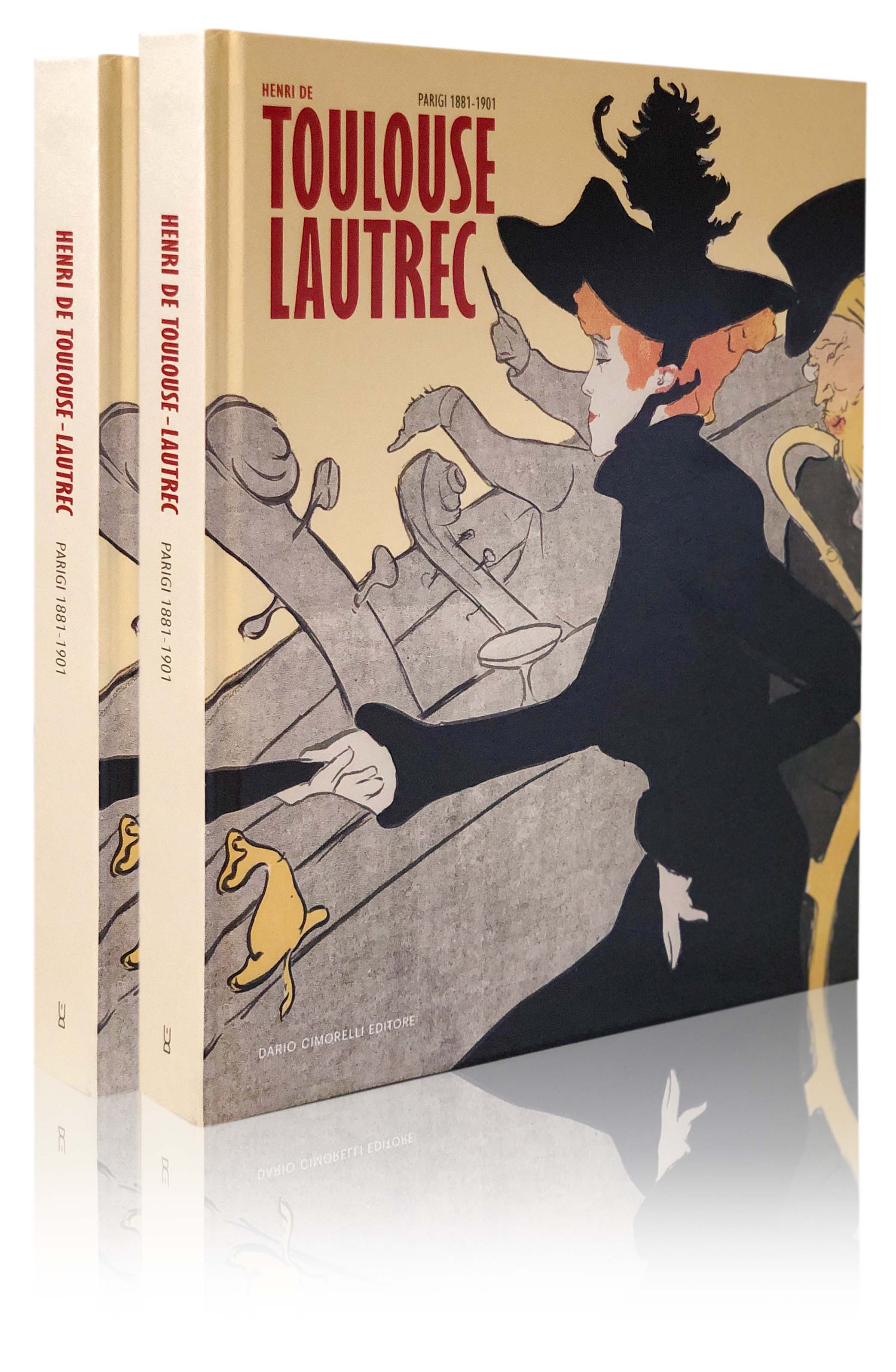
26 Mar Henri de Toulouse-Lautrec. The exhibition and the catalogue by Dario Cimorelli Editore. Printed by Tecnostampa, Pigini Group.
Palazzo Roverella has opened the doors of the exhibition “Henri de Toulouse-Lautrec. Paris 1881-1901”. The now traditional appointment with great international painting brings to Rovigo one of the most representative French artists of turn-of-the-century Paris. From 23 February to 30 June 2024, more than 200 works, of which 60 by the artist, retrace the work of Toulouse-Lautrec and the world to which he belonged, which he narrated with a new gaze full of reality.
The exhibition, produced by Dario Cimorelli Editore and promoted by Fondazione Cariparo, in collaboration with the Municipality of Rovigo and the Accademia dei Concordi, with the support of Intesa Sanpaolo, offers the largest exhibition ever held in Italy of Toulouse-Lautrec.
The research work, carried out by the curators Jean-David Jumeau-Lafond, Francesco Parisi and Fanny Girard (director of the Toulouse-Lautrec Museum in Albi) and with the collaboration of Nicholas Zmelty (section Posters and Engravings). It is an unprecedented and unmissable opportunity to immerse yourself in the streets of Montmartre and meet its actors.
Overcoming the approach that so often reduces Toulouse-Lautrec to a universe devoid of facets and sometimes even relegating it to the sole activity of creator of posters, this exhibition focuses on his work as a painter, with paintings and pastels from important American and European museums as well as French, in relation to the Parisian environment in which he worked, comparing the artist with realists, impressionists, symbolists with whom he shared experiences and moments of everyday life.
The exhibition obviously does not neglect the activity of Toulouse-Lautrec in the field of poster. In addition to the famous Affiches, paintings and preparatory drawings of the artist are exhibited, alongside them in a dialectical relationship to the works of the many artists active simultaneously in the same environments, which often address the same issues. This careful reconstruction of the entire activity of Toulouse-Lautrec, through his works (60 works of the artist out of more than 200 total exhibited works) intends to evoke in a broader and organic way the liveliness of the Parisian artistic scene, overcoming the reductive concept of Belle Époque.
The graphic revolution.
The first artist to realize the potential that art could offer to advertising, Henri de Toulouse-Lautrec has executed about 30 posters throughout his career, among which are famous the advertising posters of Parisian clubs, Divan Japonais, Moulin Rouge: Bal Tous les soirs, Aristide Bruant at the Ambassadeurs, who over time have made their image famous. The synthetic and linear style of the artist was well suited to the graphic style of the posters that, for technical reasons, did not allow the use of a wide range of colors.
The lithographs were made on blocks of limestone inked. The images were then printed on the paper through a hand-operated press.
The first poster created by Lautrec is Moulin Rouge: la Goulue, dated 1891. The restaurant had been opened a few years earlier by Charles Zidler. The work had the dual purpose of promoting the local and the dancers who worked there.
THE BOOK
Henri de Toulouse-Lautrec
Curated by:
Jean-David Jumeau-Lafond
Francesco Parisi
Pages: 368
Size: 23×28 cm
Finishing:
sewn paperback with hardcover
Publisher:
Dario Cimorelli Editore
Printing by:
Tecnostampa
Loreto (AN) Trevi (PG) Italia
For learn more
“Henri de Toulouse-Lautrec”


